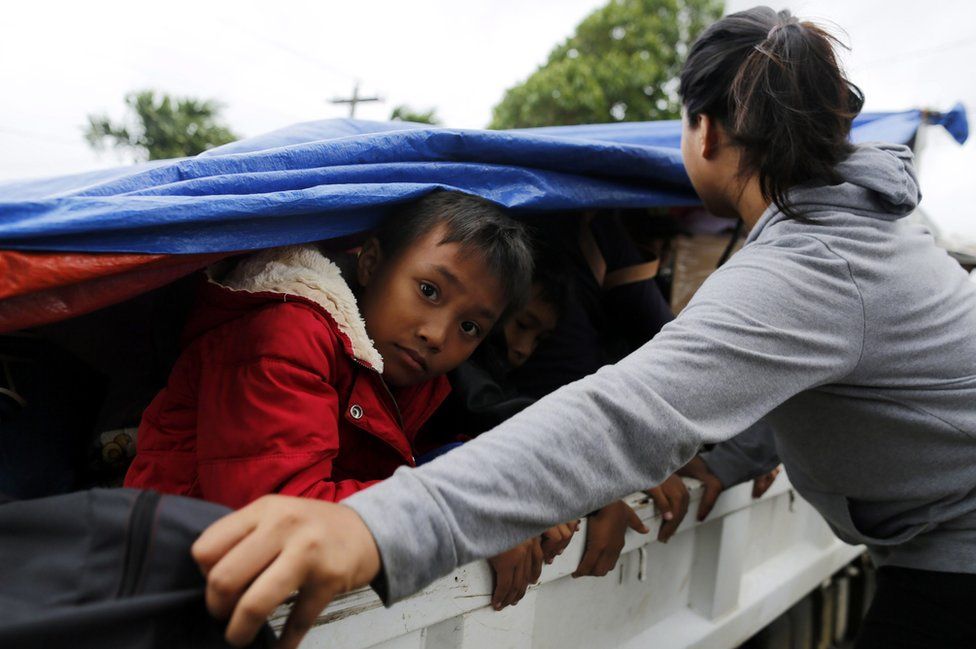Super Typhoon Haima batters Philippines
- Published

At least four people have been killed in the Philippines as Super Typhoon Haima hit the country.
The storm, which brought sustained winds of up to 225km/h (140mph), made landfall over Cagayan in the north on Wednesday.
Nearly 100,000 people were evacuated from threatened areas as the storm approached.
There was widespread damage overnight, with homes destroyed and power lines brought down.
Authorities said two of those killed were buried in a landslide, and two others buried in a shanty town in a mountainous region.
The Philippines were hit by a barrage of powerful winds
Experts had feared Haima could prove as destructive as the catastrophic super typhoon Haiyan, which claimed more than 7,350 lives in 2013.
The Philippines endures around 20 major storms every year, many of them deadly.
"I'm 60 years old, this is the strongest typhoon I have ever seen," village councillor Willie Cabalteja told news outlet the Associated Press.
President Rodrigo Duterte, in Beijing on a state visit, had said he prayed the Philippines would be spared but that they were "ready".
"We only pray we be spared the destruction such as previous times. Everything has been deployed."
The storm was upgraded to a super typhoon just before it hit in Penablanca, a town in Cagayan province, around 23:00 local time (1500 GMT) on Wednesday.
On Thursday morning, there were reports of damage across a wide area.
"Rice and corn plants as far as the eye can see are flattened," Villamor Visaya, a teacher in the northern city of Ilagan told the AFP.
"Many houses were destroyed. I saw one school building crushed under a large tree... it was as if our house was being pulled from its foundations."
Haima, known as Lawin locally, had a weather band 800km (500 miles) wide, and authorities had warned the public to expect fierce winds and storm surges up to five metres (16 feet) or higher.
It is the second typhoon to hit the Philippines in a week, after Sarika struck on Sunday. At least one person was killed in that storm, and three people are still missing.
Haima is now moving out across the South China Sea towards Hong Kong and southern China.
- Published17 October 2016
- Published5 July 2023